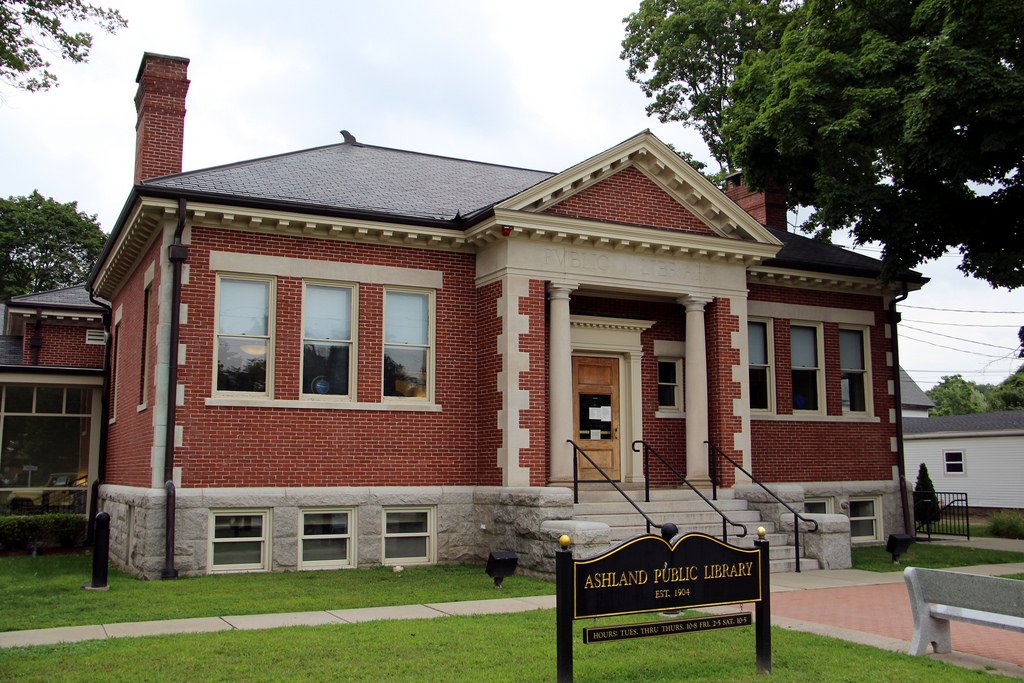#5414. Neoclassical Brick Facade of Ashland Public Library (1924): Symmetry, Contrast, and Classical Proportions
The image shows the Ashland Public Library, established in 1924, as noted on the information sign in front of the building. This is an excellent example of neoclassical architecture from the early 20th century, executed in brick style.
The facade of the building demonstrates strict symmetry and classical proportions. The central portico with a triangular pediment rests on two columns, creating a monumental entrance. Particular attention is drawn to the contrast between the red brick of the main masonry and the light decorative elements: cornices, window frames, and corner quoins. This technique emphasizes the architectural articulation of the building.
The library's base is made of rough stone, giving the foundation visual strength and textural contrast. The windows on the main floor have a rectangular shape with proportions characteristic of the neoclassical style, while the semi-basement floor is equipped with smaller windows.
The roof of the building is a classic hip roof covered with dark shingles. An expressive brick chimney adds a vertical accent to the composition. The strict lines of the cornice with denticular elements (modillions) create a clear completion of the facade and emphasize the horizontal division.
A staircase with metal railings is located in front of the entrance, adding additional solemnity to the facade. The overall composition of the library reflects the characteristic aspiration of American public buildings from the beginning of the last century to embody the ideals of enlightenment through the architectural forms of classicism.
